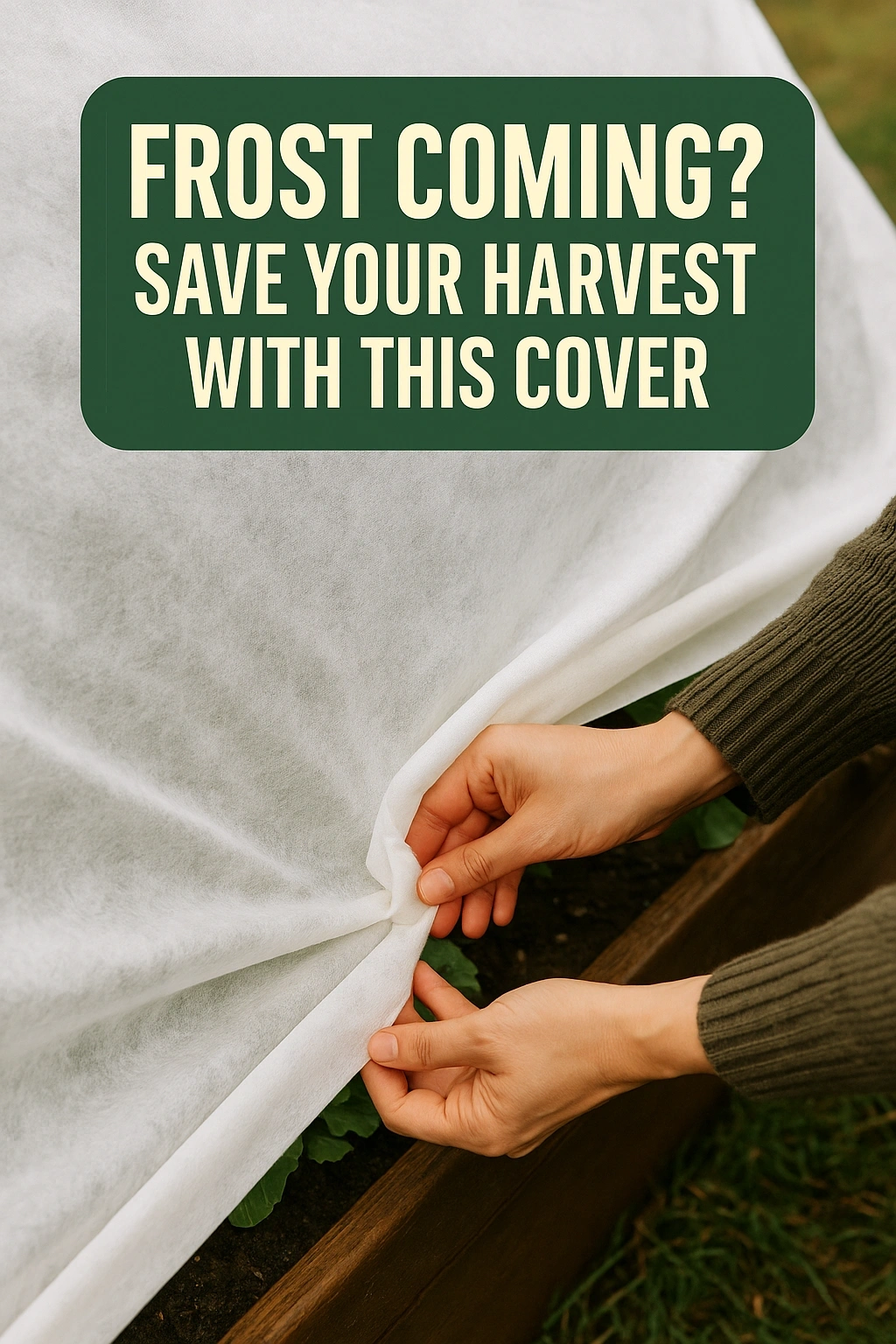
As the temperatures drop and frost threatens your garden, protecting your harvest becomes crucial. With the right cover, you can safeguard your plants from frost damage and extend your growing season. This article delves into effective strategies, materials, and techniques for covering your crops, ensuring that you can enjoy the fruits of your labor even as winter approaches. Read on to discover practical advice that can save your harvest.
Understanding Frost and Its Impact on Plants
Frost occurs when temperatures fall below freezing, leading to ice formation on surfaces. This phenomenon can severely impact sensitive plants, causing cell damage and potentially leading to plant death. Understanding the timing and conditions under which frost occurs can help you take proactive measures to protect your harvest.
Types of Frost
There are two main types of frost: radiation frost and advective frost. Radiation frost typically occurs on clear, calm nights when heat radiates from the earth’s surface. Advective frost happens when warm, moist air moves over cold surfaces. Knowing the difference can help you decide when and how to cover your plants.
Selecting the Right Covering Material
The choice of covering material is critical for effective frost protection. Various options are available, each with its advantages and disadvantages. Selecting the right material will depend on the type of plants you are protecting, the expected temperature drop, and how long you need the cover to stay in place.
Common Covering Materials
- Row Covers: Lightweight fabrics that allow light and moisture to pass through while providing insulation against frost.
- Plastic Sheeting: Offers excellent protection from frost but can trap heat, potentially overheating plants on sunny days.
- Mulch: Organic materials such as straw or leaves can insulate the ground and protect plant roots from freezing.
- Blankets and Towels: Household items can be used in a pinch, though they may not be as effective as specialized materials.
Techniques for Effective Frost Protection
Simply covering your plants is not enough; proper techniques can significantly enhance the effectiveness of your frost protection efforts. Here are some practical techniques to ensure your plants remain safe.
Proper Covering Techniques
- Cover Before Nightfall: Apply the cover before temperatures drop to maximize effectiveness.
- Ensure Good Coverage: Make sure the cover extends to the ground to trap heat and prevent cold air from seeping in.
- Remove During the Day: If temperatures rise during the day, remove the cover to prevent overheating and ensure adequate sunlight exposure.
- Secure the Covers: Use weights or stakes to keep your covers in place against wind and weather.
Timing Is Key: When to Cover Your Plants
Knowing when to cover your plants is essential for effective frost protection. Monitoring weather forecasts and understanding your local climate can help you anticipate frost events. Here are some tips on timing your cover.
Monitoring Weather Conditions
Keep an eye on the weather forecasts, especially during the fall months when frost is most likely. Pay attention to temperature drops at night and any warnings issued by local meteorological services. Being proactive can save your plants from unexpected frost damage.
Special Considerations for Different Plants
Not all plants require the same level of frost protection. Understanding the specific needs of your plants can help you tailor your approach effectively. Some plants are more resilient than others, while some require immediate and comprehensive protection.
Hardy vs. Tender Plants
- Hardy Plants: Plants like kale and broccoli can withstand light frosts and may only need minimal protection.
- Tender Plants: Species such as tomatoes and peppers are highly susceptible to frost and require immediate covering when frost is forecasted.
Long-Term Strategies for Frost Protection
While immediate frost protection is vital, long-term strategies can also help protect your harvest year after year. Consider implementing these methods in your gardening practices for continuous success.
Building a Greenhouse or Cold Frame
Investing in a greenhouse or cold frame can provide year-round protection for your plants. These structures allow you to control the environment, extending your growing season significantly. They can be particularly beneficial for tender plants that require consistent warmth.
FAQs
How can I tell if my plants are frost-sensitive?
Researching specific plant varieties is the best way to determine frost sensitivity. Generally, tender plants such as tomatoes, peppers, and basil are more susceptible to frost than hardy plants like kale and carrots.
What temperature should I cover my plants?
It is advisable to cover plants when temperatures are expected to drop to around 32°F (0°C) or lower. This is when frost formation begins, and covering can help retain heat close to the plants.
Can I use regular household items to cover my plants?
Yes, household items like blankets, towels, or old sheets can work in a pinch. However, specialized materials like row covers or frost cloths offer better insulation and breathability.
How long can I leave covers on my plants?
Remove covers during the day if temperatures rise significantly to prevent overheating. If frost is expected again at night, you can replace the cover in the evening.
What is the best way to secure my covers?
Using weights, stakes, or even rocks can help secure covers against wind and shifting temperatures. Ensure that the cover is snug against the ground to prevent cold air from seeping in.
By understanding frost, selecting the right covering materials, and employing effective techniques, you can protect your harvest and enjoy your gardening efforts despite the challenges of colder weather. Staying informed and prepared is key to successful gardening, even as the seasons change.
